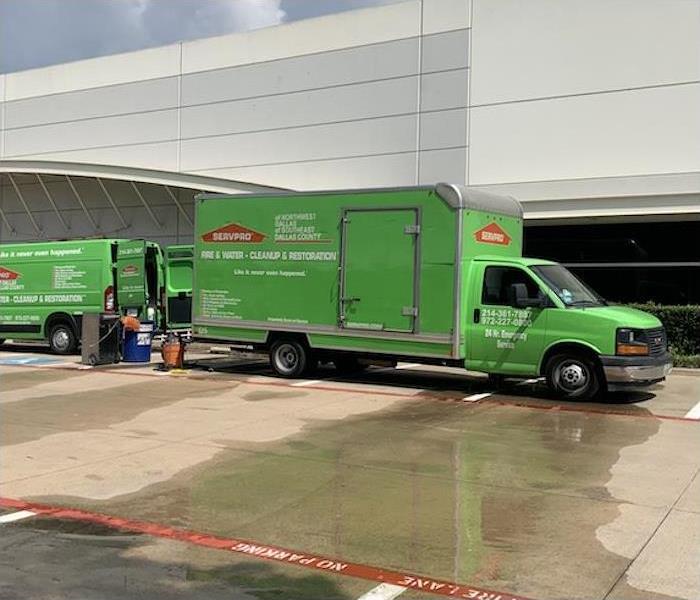Possible Reasons Why Your Dallas Home Has Mold Damage
3/27/2023 (Permalink)
 Contact SERVPRO when you see or smell mold in your Dallas home. Call right away for thorough remediation.
Contact SERVPRO when you see or smell mold in your Dallas home. Call right away for thorough remediation.
SERVPRO Inspects Dallas Homes Revealing the Best Mold Remediation Approach
Various issues can trigger mold development in a property. If the colonies start developing in random places all over your house, there could be persistent humidity or condensation accumulation inside your Dallas home. If the contamination is hidden inside cabinets, wall spaces, or other enclosed areas, you might not realize there is a problem. However, hidden mold damage is likely if the air is uncharacteristically stuffy or you detect a musty smell.
It is easy to confirm whether your Dallas home has mold damage since it causes changes like dark spots or masses of mold colonies on surfaces. When the signs are subtle, opening up confined areas can help reveal where the contamination is concentrated. SERVPRO can probe for hidden infestations conveniently using specialized equipment and doing controlled demolition.
Valuable tools for inspecting moldy areas:
- Thermal cameras
- Borescopes
- Thermo-hygrometers
- Drills
Our SERVPRO technicians use the thermo-hygrometers to check the relative humidity in the house, room by room which can narrow down areas where contamination is highly likely. A thermo-hygrometer has an inbuilt thermometer, thus allowing the technician to evaluate temperature and humidity levels. The amount of moisture air holds is influenced by the prevailing temperatures. Temperature fluctuations lead to other issues such as condensation, which can wet materials, thus sustaining mold growth.
The other tools are also handy. Thermal cameras reveal wetness concealed by solid materials such as wall panels or floorboards. It uses infrared rays to detect temperature differences between wet and dry areas. Our technicians can drill small holes in the areas where moisture spikes are detected. Then we use borescopes inserted through the holes to reveal whether there is mold growth.
Effects of mold:
- Breaking down materials
- Staining materials
- Bad odor
If your house is contaminated, you have more to worry about apart from the unsightly patches you notice on surfaces. Since there are several types of mold, the infestation in your house can exhibit different colors, including black, green, pink, grey, blue, or brown. Therefore, cleaning the affected areas can leave them stained and thus unsightly.
Managing Physical Deterioration Triggered by Mold
Molds are a form of life that requires a food source to sustain itself. The food comes from organic materials such as cellulose in wood. Unfortunately, this search for food leads to significant deterioration of the affected materials. Once moisture activates spores, they sprout hyphae that spread across surfaces and penetrate materials as the mold colonies extract nutrients. Our SERVPRO teams can help forestall such deterioration by expediting the remediation procedures such as drying the property and cleaning the infested surfaces.
The musty odor from mold may not go away immediately after cleaning and refinishing surfaces. Specific steps are necessary to facilitate odor removal. Our SERVPRO technicians can use activated oxygen to help neutralize odor molecules. We rely on Ozone generators or photocatalytic oxidizers to streamline the process. Sealing surfaces is another alternative, especially for unfinished structural wood. A sealer is a product developed to encapsulate a surface, locking in remnants of bad odor. Our technicians use fast-drying sealing alternatives that solidify within an hour and can be painted over the same day. Sealing is typically used as a last resort when other deodorization alternatives are exhausted.
SERVPRO of Northwest Dallas informs you of the best way to handle mold damage on your property. You can reach us at (214) 361-7887.





 24/7 Emergency Service
24/7 Emergency Service